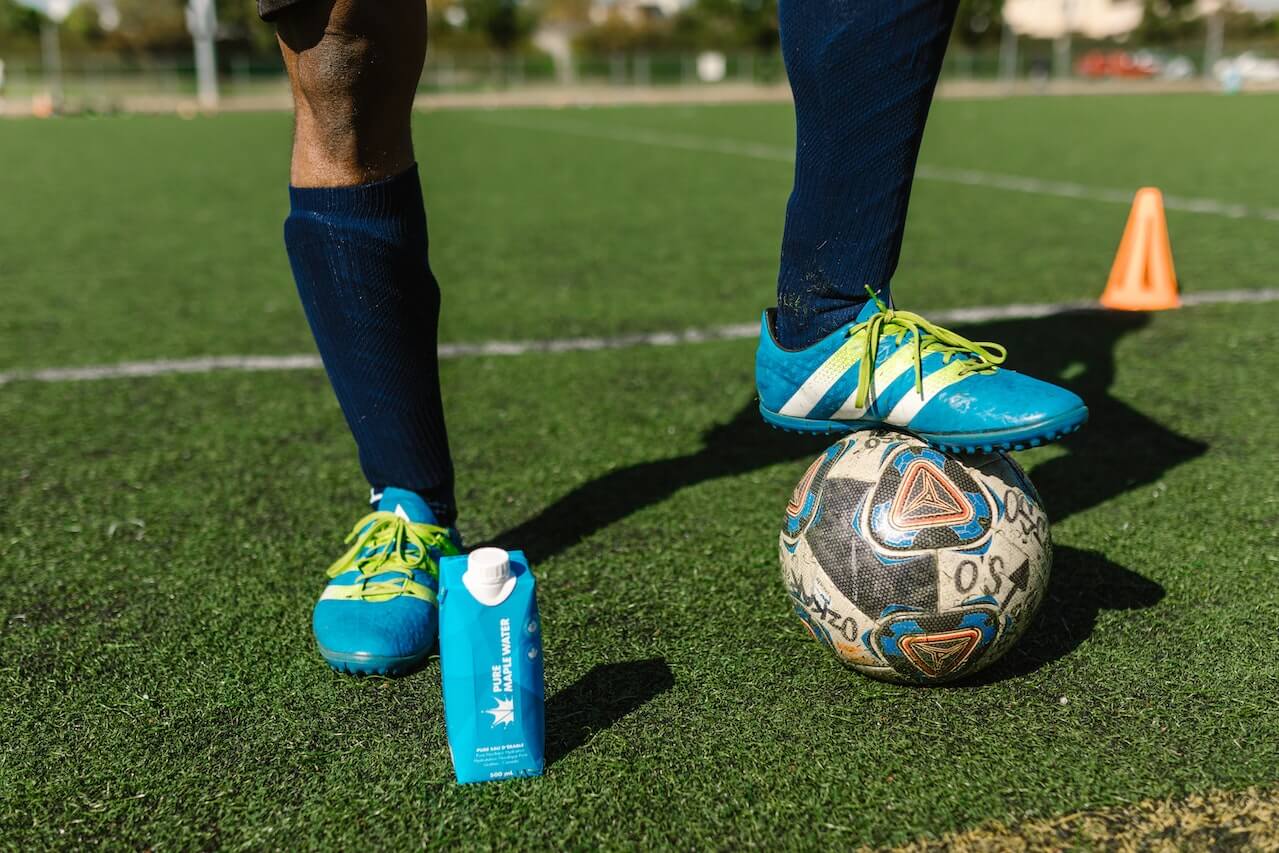Pressing drills are an essential part of any soccer team’s training regimen. They are designed to improve a player’s ability to press the opposition and win the ball back quickly. Pressing drills are particularly important for teams that play a high-pressing game, as they help players develop the necessary skills and fitness levels to execute this style of play effectively.
Pressing drills can be broken down into two main categories: individual drills and team drills. Individual drills focus on developing a player’s ability to press effectively and efficiently, while team drills focus on developing the team’s ability to press as a unit. Both types of drills are important and should be included in any training program.
During pressing drills, players learn how to read the game, anticipate the opposition’s movements, and work together as a team to win the ball back. These drills also help players develop their fitness levels, as pressing requires a high level of energy and intensity. By incorporating pressing drills into their training program, teams can improve their defensive capabilities and become more effective at winning the ball back in dangerous areas of the pitch.
Benefits of Pressing Drills
Pressing drills are an essential part of any soccer team’s training regimen. They are designed to improve a player’s ability to press and win the ball back quickly, which is crucial in today’s high-pressure game. Here are some of the most significant benefits of including pressing drills in your training sessions:
- Improved fitness: Pressing drills are physically demanding and require a high level of fitness. By incorporating these drills into your training, you can improve your endurance, speed, and agility.
- Better defensive organization: Pressing drills can help your team become more organized defensively. By pressing high up the field, you can disrupt the opposition’s build-up play and force them to make mistakes.
- Increased possession: By winning the ball back quickly, you can increase your team’s possession and create more scoring opportunities. This is particularly important in games where the opposition dominates possession.
- Improved teamwork: Pressing drills require a high level of teamwork and communication. By working on these drills in training, you can improve your team’s ability to work together and coordinate their pressing efforts.
Overall, pressing drills are an excellent way to improve your team’s defensive capabilities and increase your chances of winning games. By incorporating these drills into your training sessions, you can improve your fitness, defensive organization, possession, and teamwork.
Types of Pressing Drills
Pressing drills are an essential part of any soccer team’s training regimen. These drills help players improve their defensive skills and develop a better understanding of team tactics. Here are some of the most common types of pressing drills:
- 1v1 Pressing Drill: This drill focuses on individual defending skills. The defender must try to win the ball back from the attacker while limiting their options.
- 2v2 Pressing Drill: This drill focuses on teamwork and communication. The two defenders must work together to win the ball back from the two attackers.
- 3v3 Pressing Drill: This drill is similar to the 2v2 drill, but with an additional attacker and defender. It helps players develop their understanding of team shape and positioning.
- Full-Field Pressing Drill: This drill simulates game-like conditions and helps players develop their fitness and tactical awareness. The team must work together to press the opposition and win the ball back.
Each of these drills has its own unique benefits and challenges. Coaches should choose drills that are appropriate for their team’s skill level and focus on areas that need improvement. By incorporating pressing drills into their training sessions, coaches can help their players become more confident and effective defenders.
How to Perform Pressing Drills
Pressing drills are an essential part of any soccer player’s training regimen. These drills focus on improving the player’s ability to press the opponent and regain possession of the ball. Here are some tips on how to perform pressing drills effectively:
- Start with a warm-up: Before starting the drills, it’s important to warm up your body. This will help prevent injuries and prepare your muscles for the workout. A simple warm-up routine can include jogging, stretching, and some light exercises.
- Focus on technique: Pressing drills require good technique to be effective. Make sure you are using the correct body position, footwork, and timing to press the opponent. Practice the technique slowly at first, and gradually increase the speed and intensity.
- Communicate with your teammates: Pressing is a team effort, and it’s important to communicate with your teammates to coordinate your movements. Use verbal and non-verbal cues to signal when to press and when to drop back.
- Vary the drills: To keep the drills interesting and challenging, try varying the drills. You can change the size of the playing area, the number of players, or the type of opposition. This will help you develop different skills and techniques.
- Stay focused: Pressing drills can be physically and mentally demanding. It’s important to stay focused and motivated throughout the workout. Set goals for yourself and track your progress to stay motivated.
By following these tips, you can perform pressing drills effectively and improve your overall performance on the field. Remember to always prioritize safety and good technique, and to communicate with your teammates for optimal results.
Common Mistakes to Avoid
Pressing drills can be an effective way to improve your team’s offensive and defensive skills. However, there are some common mistakes that coaches and players should avoid to get the most out of these drills:
- Starting with too much intensity: It’s important to start pressing drills at a moderate intensity and gradually increase the intensity as players become more comfortable with the drill. Starting with too much intensity can lead to injuries and discourage players from participating.
- Not emphasizing proper technique: Players should be taught the proper technique for pressing drills, including footwork, body positioning, and communication. Without proper technique, players may not be able to execute the drill effectively and could be at risk of injury.
- Not varying the drill: Repeating the same pressing drill over and over can become monotonous and may not challenge players to improve. Coaches should vary the drill by changing the number of players involved, the starting positions, or the objectives of the drill.
- Not providing feedback: Feedback is essential for players to understand what they are doing well and what they need to improve on. Coaches should provide feedback throughout the drill and encourage players to ask questions and provide feedback to each other.
By avoiding these common mistakes, coaches and players can get the most out of pressing drills and improve their skills on the court.
Sample Pressing Drill Workouts
Here are a few examples of pressing drill workouts that can help improve your team’s pressing abilities:
1. 3v2 Pressing Drill
In this drill, three defenders work together to press two attackers. The goal is for the defenders to win the ball back and quickly transition to attack. The drill starts with the attackers in possession of the ball, and the defenders positioned to press. Once the ball is played, the defenders must work together to cut off the attackers’ passing options and win the ball back.
2. Pressing and Transition Drill
This drill focuses on pressing and quick transition play. It starts with a 6v6 game, with both teams playing to score goals. However, when one team loses possession, the other team must immediately transition to attack and try to score. This creates a high-pressure situation that emphasizes the importance of pressing and quick transitions.
3. 4v2 Rondo Pressing Drill
This drill is a variation of the popular rondo drill, with a pressing element added. Four attackers work together to keep possession of the ball, while two defenders try to win the ball back. The defenders must work together to press the attackers and force turnovers. This drill emphasizes the importance of team coordination and communication in pressing situations.
These are just a few examples of pressing drill workouts that can help improve your team’s pressing abilities. Remember to focus on teamwork, communication, and quick transitions to make the most of these drills.







